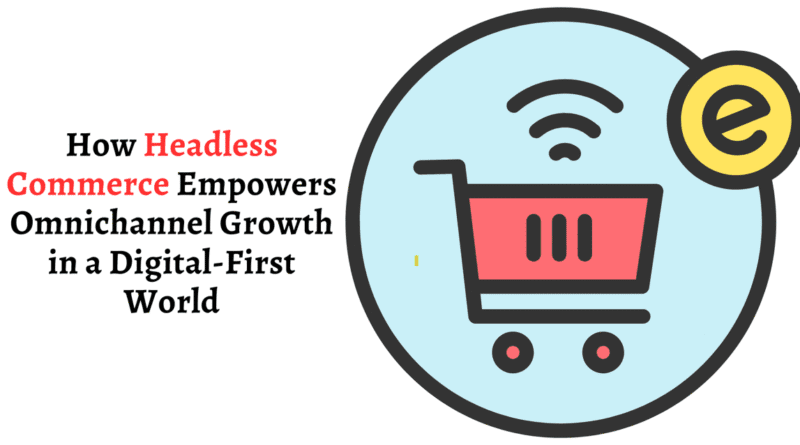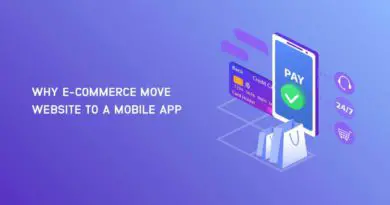How Headless Commerce Empowers Omnichannel Growth in a Digital-First World
In today’s digital-first economy, consumers expect seamless, personalized, and consistent shopping experiences regardless of the channel they choose to engage with. As customer touchpoints multiply across websites, mobile apps, social platforms, IoT devices, and in-store technology, traditional eCommerce platforms often struggle to keep up. This is where Headless Commerce comes in, a modern approach that enables brands to scale and innovate without the constraints of legacy systems.
Table of Contents
What is Headless Commerce?
Headless Commerce is an architectural separation of an eCommerce system’s front end (the “head”) and back end. In this setup, the user interface (UI) is decoupled from the core commerce functionality. Instead of relying on a single, tightly coupled system, developers use APIs to deliver content and services to any front-end experience, whether a website, mobile app, smart mirror, or voice assistant.
Key Features of Headless Commerce:
- API-first design enabling integration across multiple platforms.
- Front-end flexibility to design custom experiences.
- Backend stability with robust commerce functionality like cart management, payments, inventory, etc.
- Omnichannel readiness to support diverse customer touchpoints.
The Rise of Omnichannel in a Digital-First Era
With digital transformation accelerating post-pandemic, businesses are investing heavily in omnichannel strategies. Consumers no longer follow a linear buying journey. A shopper might research a product on Instagram, check reviews on a mobile app, try in-store, and complete the purchase via a desktop site.
What Consumers Expect Today:
- Consistency across devices and channels.
- Real-time inventory visibility.
- Personalized recommendations based on browsing behavior.
- Fast, seamless checkouts.
- Instant customer service via chat, social DMs, or SMS.
Traditional commerce platforms, with their monolithic architecture, find it difficult to deliver this level of agility and customization. That’s where Headless Commerce truly empowers omnichannel growth.
How Headless Commerce Enables Omnichannel Growth
1. Unified Yet Flexible Customer Experience
With headless architecture, businesses can build customized front-ends for each channel without duplicating backend logic. Whether it’s a mobile-first website or an AR-based retail display, the same backend powers all experiences.
- Example: A fashion retailer uses the same backend to show inventory on its website, Instagram Shop, and in-store kiosks, all updated in real time.
2. Faster Time to Market
In an omnichannel strategy, new touchpoints emerge constantly. Headless Commerce allows brands to quickly create experiences for new platforms without overhauling the entire system.
- Brands can use existing APIs to test and launch a voice commerce skill for Alexa or a smart TV shopping app.
3. Personalized and Consistent Engagement
Omnichannel personalization requires seamless data exchange across channels. Headless systems integrate easily with CRM, CDP, and AI engines to deliver context-aware experiences.
- Use browsing history from a mobile app to personalize emails or tailor homepage content for return visits on desktop.
4. Scalable Innovation
As customer expectations evolve, businesses need to innovate continuously. Headless Commerce lets teams work independently on the front and back end, enabling continuous deployment and faster innovation.
- Developers can A/B test UI changes or integrate new payment methods without affecting backend stability.
5. Reduced Dependency on IT
Marketers and content creators often face bottlenecks in traditional systems. Headless Commerce platforms can be integrated with headless CMS tools like Contentful or Sanity, allowing content teams to create and publish across channels without technical help.
- A new product campaign can go live simultaneously on mobile, web, and in-store screens and be maintained from one dashboard.
Real-World Examples of Headless Commerce Driving Omnichannel Success
Nike:
Nike adopted a headless approach to unify customer experience across its mobile app, website, and retail stores. Their flexible architecture enabled faster rollouts, enhanced personalization, and smoother omnichannel integration.
Sephora:
The beauty brand leverages headless commerce to bridge the gap between online and offline, using smart mirrors in stores and personalized mobile experiences driven by customer data.
Target:
Target improved its mobile and in-store technology stack by decoupling front-end and back-end systems, enabling features like same-day delivery, pickup scheduling, and real-time stock updates.
Is Headless Commerce Right for Every Business?
While the benefits are numerous, Headless Commerce is best suited for:
- Mid-to-large enterprises are looking to scale rapidly across multiple channels.
- Brands focused on CX innovation and digital agility.
- Retailers with global or multilingual operations need localization.
- Businesses invest in progressive web apps (PWA) or native app development.
However, a traditional eCommerce platform may still suffice for small businesses with limited development resources or single-channel sales.
Future Outlook: Headless as the Backbone of Composable Commerce
Headless Commerce is a key enabler of the composable commerce movement, where businesses build custom eCommerce ecosystems by integrating best-of-breed tools. This approach supports long-term omnichannel growth by offering both flexibility and control.
Components of a Composable Stack:
- Headless CMS for content.
- MACH-based architecture (Microservices, API-first, Cloud-native, Headless).
- PIM (Product Information Management).
- Headless Checkout & Payment APIs.
With such a setup, businesses can rapidly respond to new consumer trends, regulations, or market opportunities.
Conclusion
In a digital-first world where customer expectations are higher than ever, brands must rethink how they deliver experiences. Headless Commerce offers the agility, flexibility, and scalability needed to thrive in an omnichannel landscape. By separating content, design, and commerce functionality concerns, businesses can meet their customers wherever they are on any device, at any time, with a consistent and delightful experience.
As more companies embrace headless architecture, it’s clear that this is not just a passing trend, but a foundational element for future-ready commerce.



